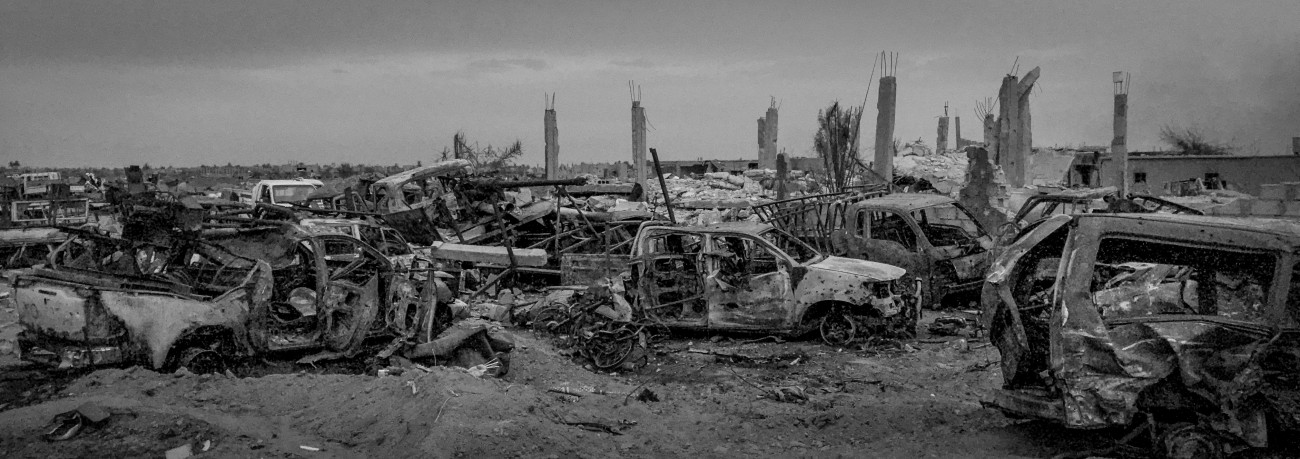
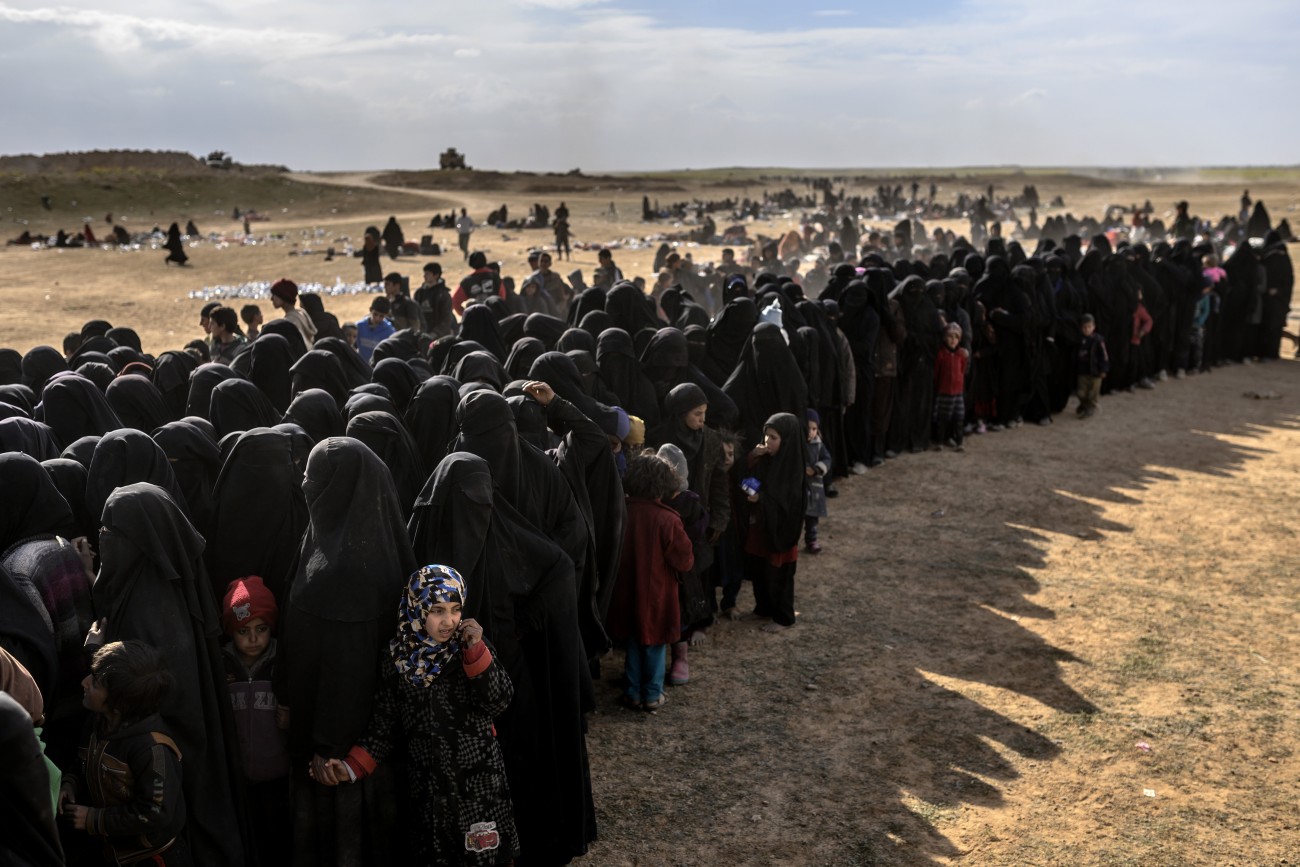
Summary
It is unclear how many civilians were killed in February and March 2019, when the U.S.-led coalition and the Syrian Democratic Forces (SDF) pounded ISIS’s last enclave around the town of Baghouz. Presumably, the numbers reached into the thousands. Those who escaped found themselves in the desert, hundreds of kilometers away from lifesaving aid. The reasons for the failure of the humanitarian response were mainly political.
Introduction
“Casualties came from all over the spectrum. Some were from Inherent Resolve airstrikes or the artillery batteries that were pounding the caliphate lines on the outskirts of Baghouz. Some were from caliphate gunfire as fleeing IDPs were trying to get away from the fighting, while others were even from SDF fire as militiamen in forward positions mistook refugee packed vehicles for potential VBIEDs [vehicle-borne improvised explosive devices] racing towards them in one final suicide attack. Indeed, at the beginning of February several SDF fighters were killed when fake ‘babies’ that women were bringing in as IDPs exploded. On top of the wartime wounds were skin diseases, live births, miscarriages, kidney stones, and even old-age conditions that all had to be attended to medically among the squalor of the temporary IDP site.”
The above quote comes from the personal notes1 of Miles Vining, a volunteer with the Free Burma Rangers (FBR), who was present at the battle for Baghouz as a first responder. Based in a small outpost in the desert of Deir ez-Zor, he and his colleagues treated thousands of people — both civilians and members of ISIS — who poured out of the caliphate’s final enclave. On March 23, after six weeks of intense fighting, the SDF finally declared victory.
The offensive against the caliphate’s last pocket had been preceded by major offensives against ISIS by both the U.S.-led coalition and the Syrian government in the months before. The scramble for the territory of the collapsing caliphate ended at the Euphrates in Deir ez-Zor, where the river served as a natural border between the two sides. In between, there were a mixture of committed ISIS fighters and their families, as well as civilians who were caught between the fronts and found themselves cornered in the small towns of the Middle Euphrates River Valley. In the end, they were finally stranded in Baghouz, a small town in the province of Deir ez-Zor close to the Iraqi border.
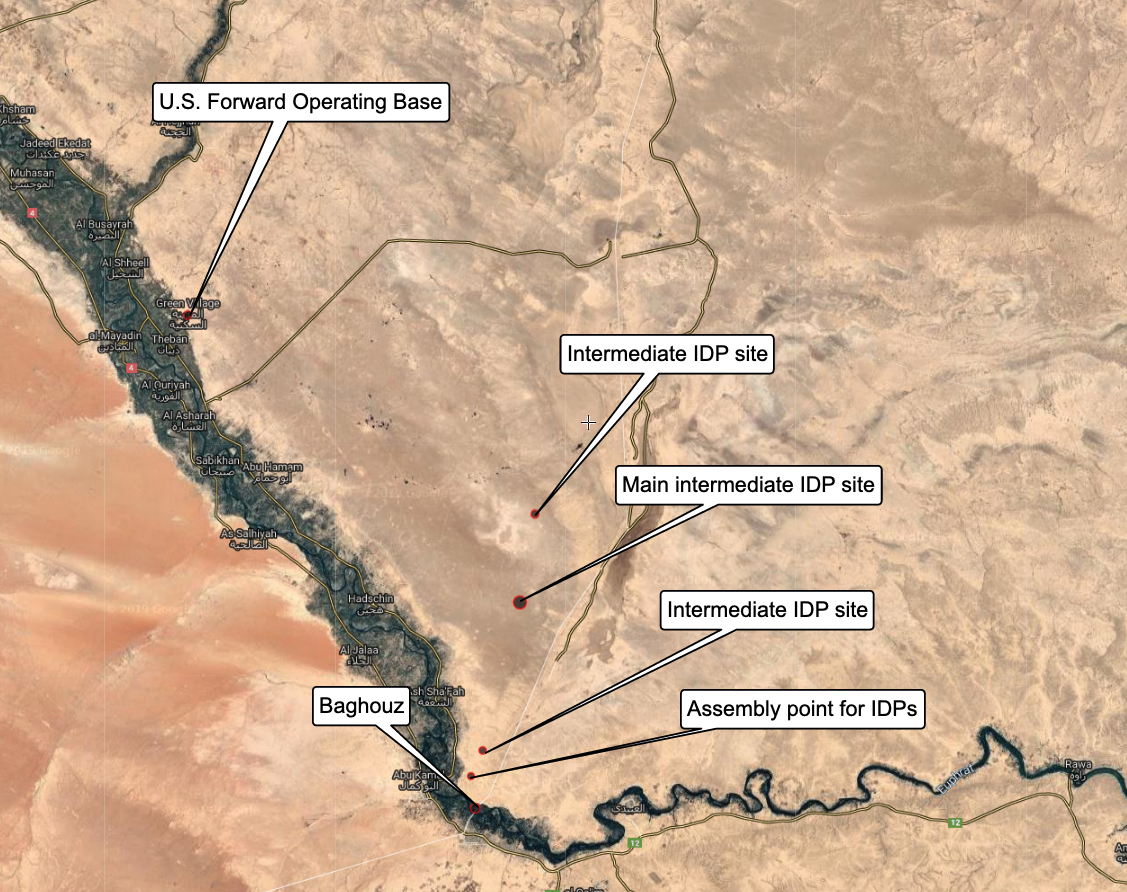
The sheer masses of people that continued to pour out of ISIS territory overstrained the capabilities of the nearest IDP camps. More than 63,000 people fled the remaining ISIS territory between December 2018 and late March 2019. The population of the al-Hol camp, now infamous as a breeding ground for ISIS’s ideology, increased sevenfold within the span of three months. But many of the wounded and sick did not survive the 300-km journey from Baghouz to al-Hol. Contrary to other major offensives against ISIS strongholds, for example in Mosul, preparations to meet basic humanitarian needs had not been made.
This paper aims to explore the circumstances that led to this humanitarian failure. It sheds light on the difficulties that aid organizations faced in their attempt to get access and problematizes the UN’s working relationship with the Syrian government. It then illustrates the dangers that first responders faced near the frontlines and finally discusses the lessons that can be learned for the international community, as well as relevant donors and members of the U.S.-led coalition.
The analysis draws on interviews with involved stakeholders, including former UN staff, aid organizations, members of the FBR, and SDF fighters. Special thanks are due to Miles Vining, whose personal notes will hopefully provide a vivid account of conditions near the frontlines.
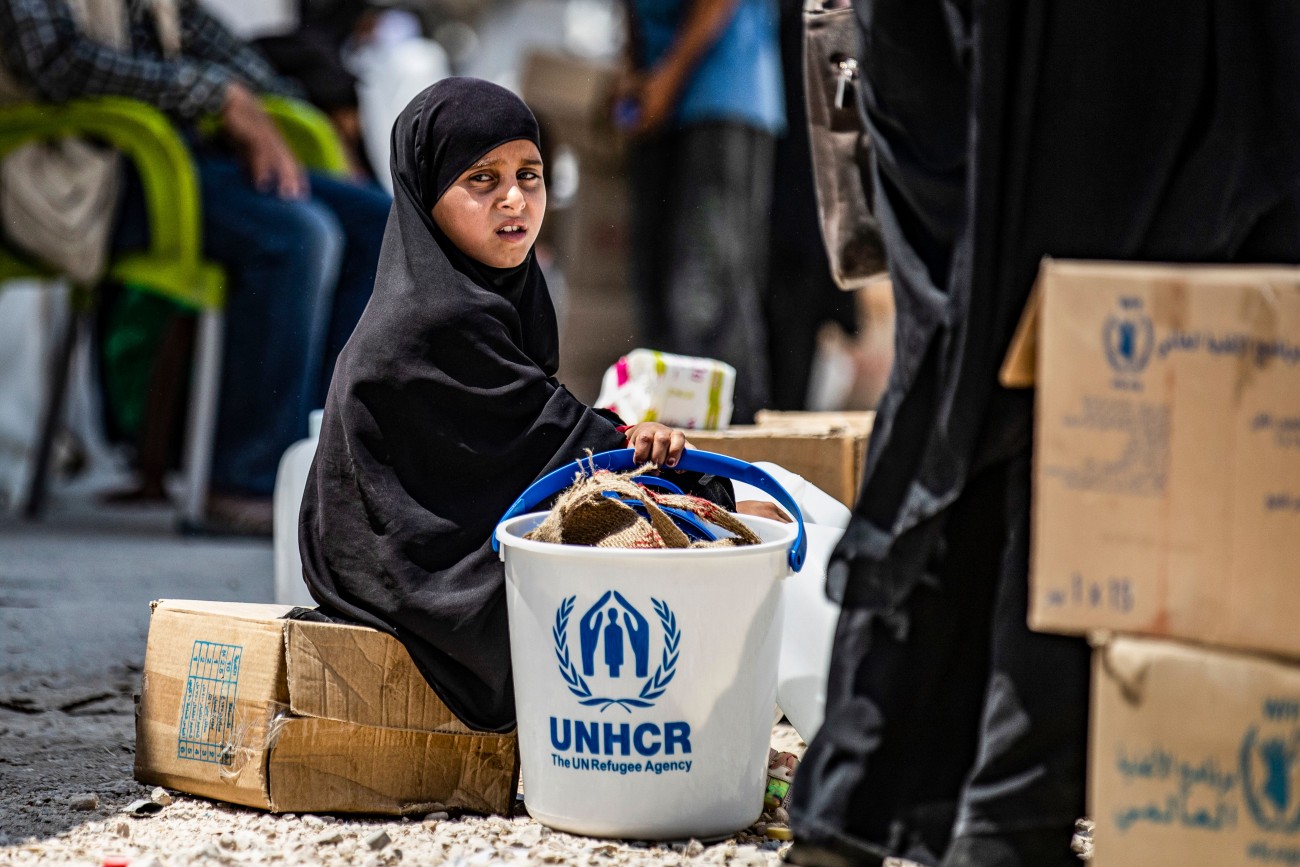
“Speaking anonymously, a former UN employee who worked in northeast Syria told this author that the SDF did not deny access to the UN. The Syrian government, however, consistently interfered in the UN’s work and repeatedly denied its staff access to the frontlines in Deir ez-Zor, he said."
The struggle for access
In early February 2019, the UN Refugee Agency called for access to areas closer to the frontlines. A UNHCR statement said that a request by “humanitarian actors” to set up a transit site on the route to al-Hol remained unimplemented.2 But neither the UNHCR nor Elizabeth Hoff, the World Health Organization’s representative in Syria who echoed the call, mentioned the recipient of the request. Both referred to “forces in control of the area” without clarifying who was meant. It is reasonable to assume that this ambiguity was intentional. The SDF denied that they had received any such request. But there was another force that controlled the humanitarian possibilities and limits of the area: the Syrian government.
Speaking anonymously, a former UN employee who worked in northeast Syria told this author that the SDF did not deny access to the UN. The Syrian government, however, consistently interfered in the UN’s work and repeatedly denied its staff access to the frontlines in Deir ez-Zor, he said.
Two weeks later, in mid-February, the UN opened a small transit center with room for 400 people in Suar,3 halfway between Baghouz and al-Hol, 300 km away. But that was as close as the UN would get.
While the Syrian government hindered the UN’s access to frontline areas, the U.S. and SDF blocked (I)NGOs that tried to fill the humanitarian gap.4 This was not only because of security concerns, but also because the U.S.-led coalition was eager to avoid the presence of witnesses to its bombing campaign as it targeted an increasingly densely populated area. The aim was to minimize bad publicity that would not only damage the U.S.-led coalition’s reputation internationally, but could also be used by radical groups for propaganda purposes.
Air strikes, artillery, and mortar fire pounded the enclave around Baghouz for weeks. Conservative estimates from AirWars concluded that the area was targeted by 290 air and artillery strikes between February 24th and March 23rd, resulting in the deaths of at least 268-752 civilians in 12 confirmed events in March alone. When the battle was over and the U.S.-led coalition granted journalists guided access for a couple of hours, the extent of civilian casualties had already been covered up. The SDF had quickly bulldozed the area to bury the bodies of killed fighters and civilians.5
Miles Vining, the volunteer with the FBR, was among the first non-combatants to enter the center of Baghouz:
“Although we couldn’t walk through the largest of the tent cities due to ongoing clearing operations, we were able to visit that small city center of Baghouz itself. Many of the bodies had been buried, but you could still smell them. And if you happened to have a stuffy nose, the swarms of flies left no doubt in anyone’s mind as to the amount of death and destruction that had occurred here. As we carefully picked our way through buildings and grass spaces once crawling with the remnants of the so-called Islamic State, we didn’t get the impression of a sort of deathly zombie land or ghost town. If anything it seemed more like a town that might have had a hurricane come through and everyone simply left in a hurry, waiting somewhere else to come back and restart. There wasn’t a feeling of sinister evil that one might have expected to be omnipresent in the very air molecules.”
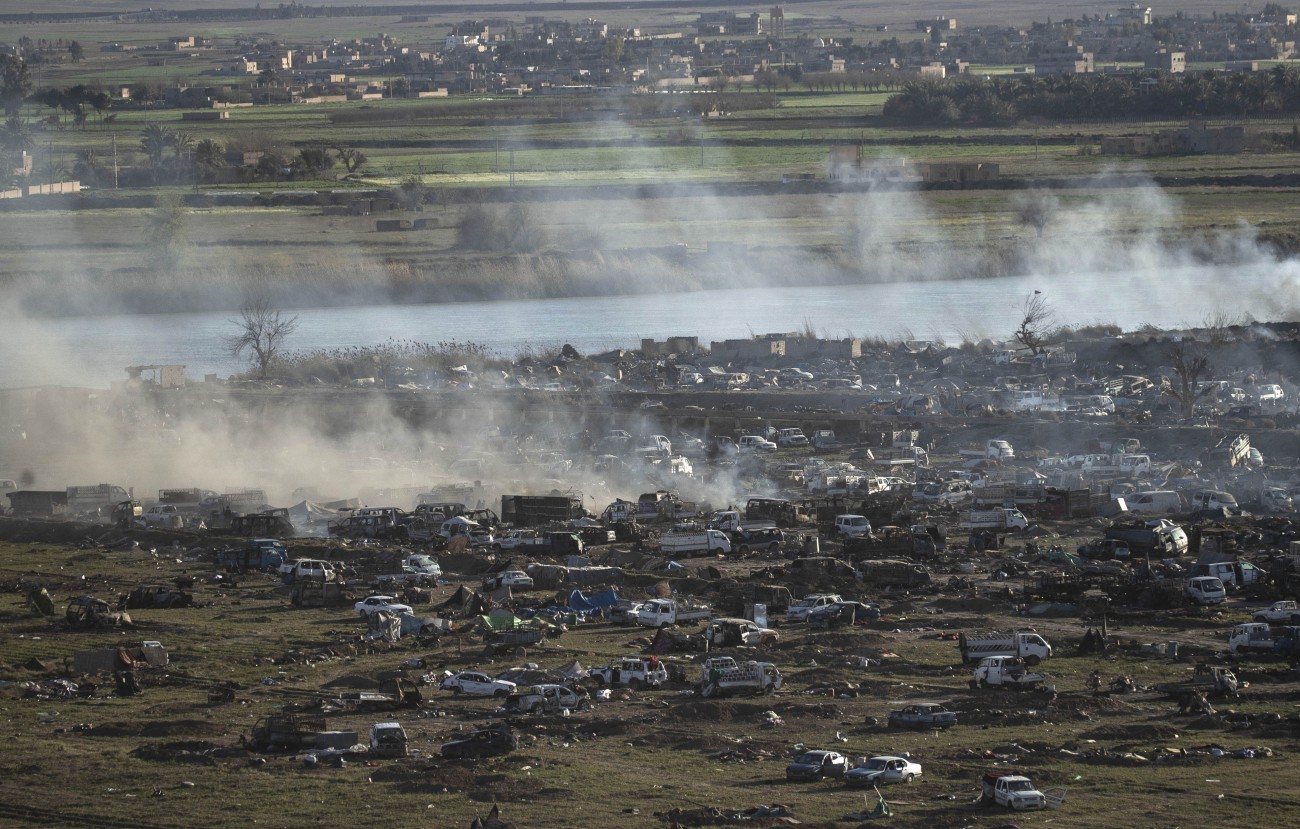
"Air strikes, artillery, and mortar fire pounded the enclave around Baghouz for weeks. Conservative estimates from AirWars concluded that the area was targeted by 290 air and artillery strikes between February 24th and March 23rd, resulting in the deaths of at least 268-752 civilians in 12 confirmed events in March alone.”
The UN's problematic role
Despite the Syrian government’s limitations and restrictions on humanitarian operations in certain areas, UN Security Council Resolution 21656 would have provided the UN with a legal framework to conduct cross-border operations separate from the process of aid distribution that is centralized in Damascus. But the UN refrained, likely out of fear that damaging its relations with Damascus could endanger ongoing and future operations.
A number of studies have shown how deeply the UN is influenced and sometimes even co-opted by Damascus. This influence not only concerns the flow of aid7 to areas designated by the Syrian government and the channeling of funds8 to organizations under its control, but also includes power over the appointment of UN staff (see chart below).
In the SDF-held northeast, this policy of interference led to significant distrust between the local authorities and the UN, whose neutrality and impartiality have been questioned. Aid organizations and UN staff told this author that locals from the northeast applied for UN positions but were never accepted due to interference by the Syrian government. Instead, the Syrian government used to send staff from Damascus, Homs, or Latakia. These appointments created tensions with the SDF, which complained about fake reports written by these loyalists, who would send them to UN offices in Amman and Geneva to discredit the group. The same dynamics resulted in tensions between the Syrian Arab Red Crescent (SARC), the UN’s main partner on the ground, and the Kurdish Red Crescent (KRC).
Members of the People’s Protection Units (YPG), the main component of the SDF, also repeatedly claimed in conversations with this author that UN staff would not leave their cars and refused to spend the night in SDF-controlled territory. Instead, they would stay in government-held parts of Qamishli city, for example. This separation and alignment toward the Syrian government was not the UN’s genuine policy, UN staff who worked in northeastern Syria pointed out. But access to SDF-held areas required authorization from Damascus.
The UN’s compliance and distrust between actors on the ground not only affected the humanitarian response during the battle for Baghouz negatively, but it also illustrates how the humanitarian field has become an integral part of the broader power struggle in the Syrian war.
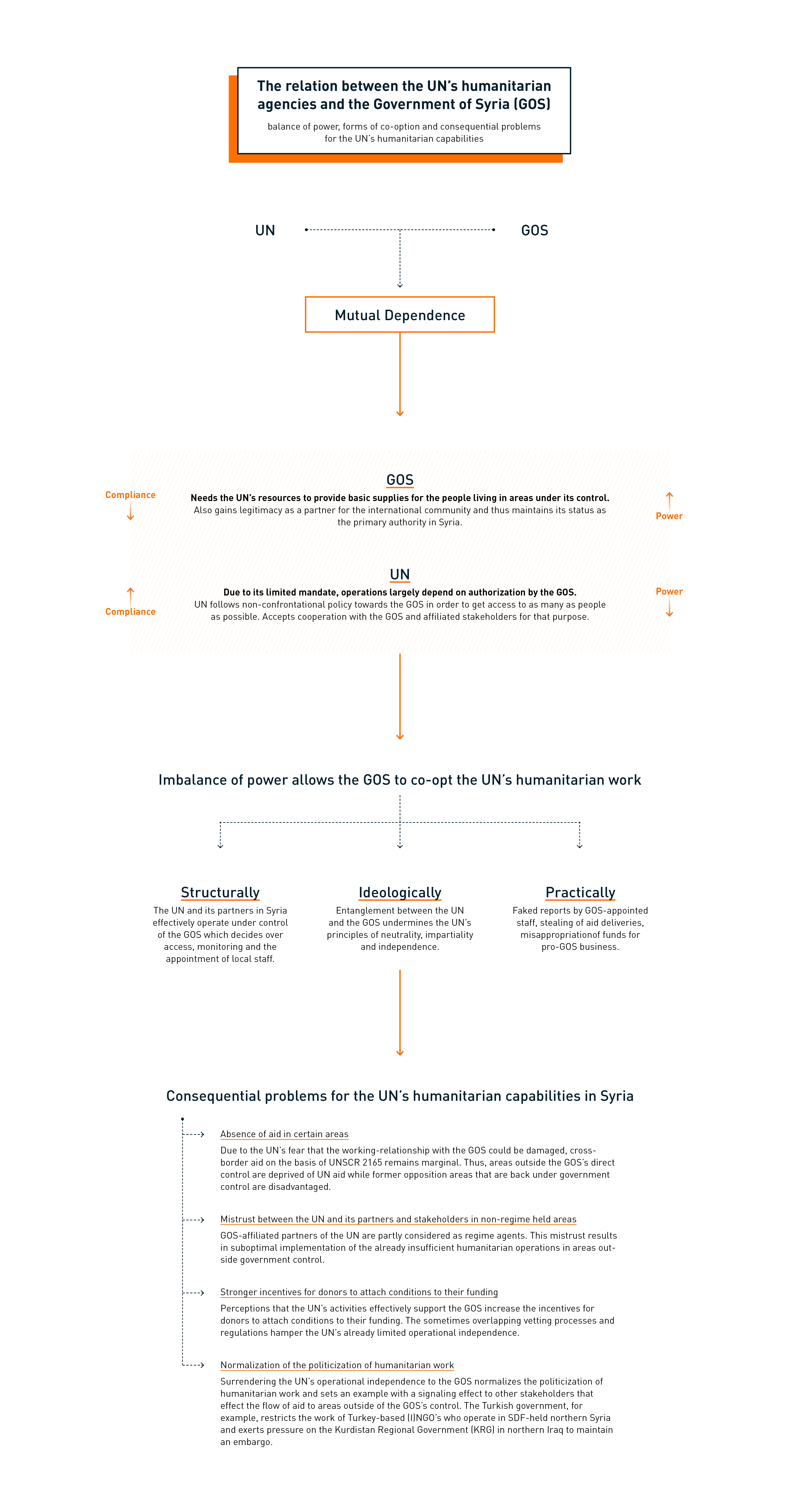
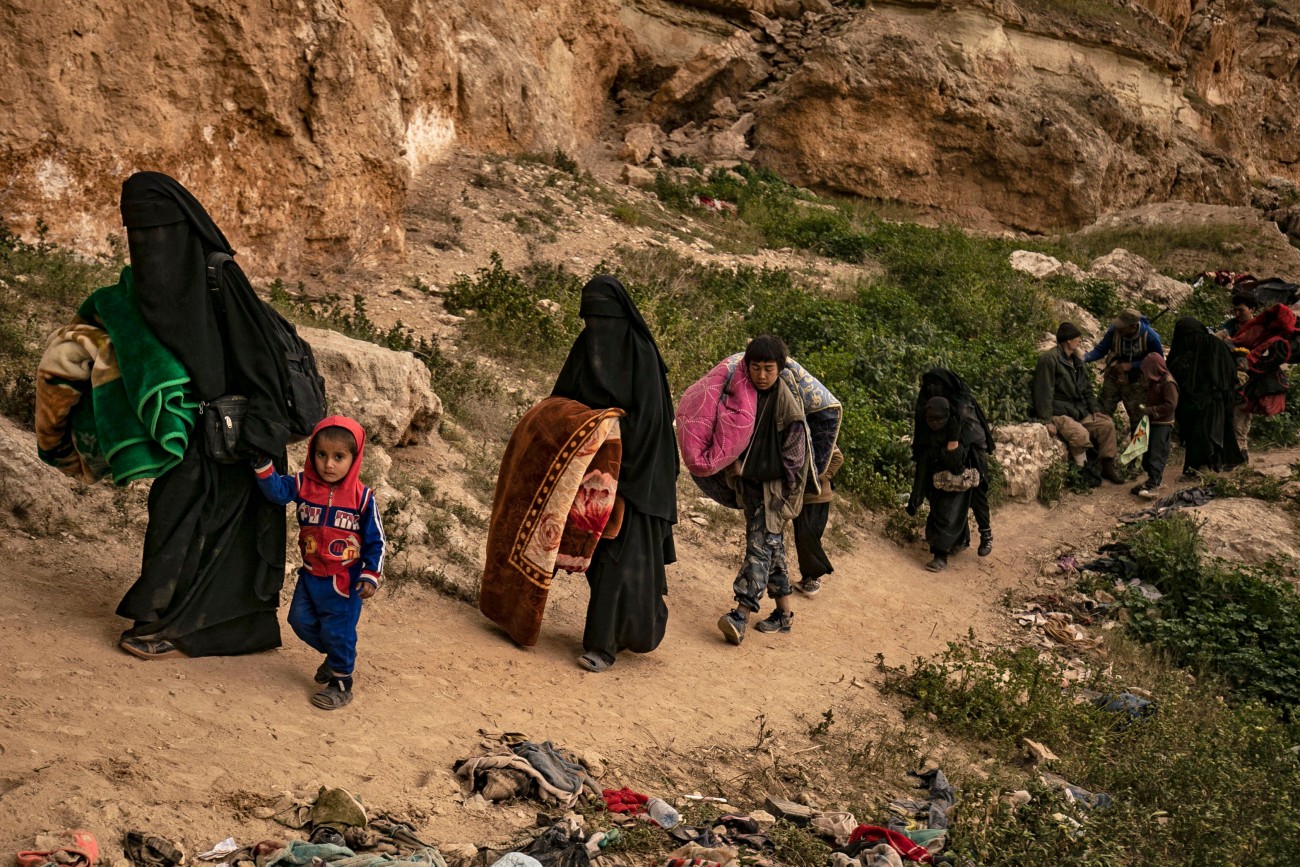
"Many simply wanted to get away as fast as possible. Most definitely came for the caliphate in its early stages but probably lost faith in it as time went on, finding themselves in Baghouz as the group retreated south from Raqqa. Others were simply caught up in the mixture, not necessarily a part of any extremist group, just local Syrians that were trying to survive another phase of the civil war.”
Dangers facing first responders
Humanitarian access depends entirely on the security situation in the area in question. The situation in Baghouz was particularly delicate because the danger posed by those who came out of Baghouz was hard to assess. Miles Vining describes the wide range of people:
“Throughout the mission that took place outside of Baghouz, there was a definite timeline that every team member felt in terms of the kinds of IDPs we were working with. In the beginning the types of families were actual IDPs, fleeing from the violence in the city. Many simply wanted to get away as fast as possible. Most definitely came for the caliphate in its early stages but probably lost faith in it as time went on, finding themselves in Baghouz as the group retreated south from Raqqa. Others were simply caught up in the mixture, not necessarily a part of any extremist group, just local Syrians that were trying to survive another phase of the civil war.
But this changed the longer we stayed. The widows became more hardcore and extremist as the fighting intensified in the city. The young men changed from possibly being affiliated with the caliphate to being captured fighters on their way to camps. A turning point was when the SDF and remaining Isis fighters made negotiations for a ceasefire in order to get a large number of the remaining civilians out of the tent city that had formed outside the small city. Their demeanor became colder, harsher, not wanting to even be treated sometimes. The foreigners especially became less interested in being interviewed or talked to about their experiences or motivations.”
Most (I)NGOs have neither the training nor the resources to operate in such an environment.
The only border crossing from Iraq to Syria that (I)NGOs can use is the Semalka crossing in eastern Hasakah. The border regime is strict, not least due to the embargo imposed by the Kurdistan Regional Government. While the majority of (I)NGOs struggle to get the necessary permissions to bring equipment and usually are not allowed to enter Syria in their own vehicles, the FBR crossed the border in their own vehicle fleet, including a military Humvee. Thus, they were able to maintain their own logistics. This privilege is a result of the personal connections the group established during their operations in Iraq.
The FBR is a non-profit organization whose volunteers include some veterans and are generally well-trained. Footage showing their alleged offensive engagement in firefights has led to claims9 that they have crossed the line between providing humanitarian aid while embedded with the SDF and actively fighting on its side. This discussion shows the difficulties that first responders have balancing their humanitarian work, remaining neutral, and exercising their right to self-defense. It also highlights the unfulfilled obligation that the U.S.-led coalition had to provide humanitarian assistance itself or protect those who stepped in to do so. The U.S.-led coalition did not meet these responsibilities, and neither provided a field hospital, nor engaged with (I)NGOs to facilitate their work.
The medical facilities that the U.S. had in their forward operating bases at the Omar oil fields and Green Village, at least 80 km away from Baghouz, were exclusively for fighters with the U.S.-led coalition and the SDF. When the SDF asked them to treat a six-year-old girl in critical condition, for example, they refused. Humanitarian response in Baghouz was thus only provided by the FBR, the SDF’s under-qualified and under-equipped medics, and the KRC, which also suffered from shortages at every level.
The tens of thousands of civilians and ISIS fighters who poured out of Baghouz were gathered at one main site on the outskirts of the town. While U.S. troops were busy collecting biometric data and searching for ISIS commanders, the first responders treated the people who sometimes carried grenades and suicide belts. The FBR, for example, treated 4,000 wounded and fed over 25,000 people.10 Security during these humanitarian operations was provided by the SDF, not by the U.S.-led coalition.11 The people were then transferred to up to three intermediate sites further north where most of the men were separated from the women and children. The majority of the women and children were then transferred to al-Hol, while ISIS fighters were distributed to several SDF prisons in other areas. Due to the poor infrastructure and logistics, the 300-km journey from the intermediate sites to al-Hol took nine hours.
“Despite the every horror and miserable condition that the IDPs faced, both men and women, the frightening realization for many on our team was that these people still had a formidable conviction. Indeed, towards the end during the SDF-Isis negotiations for terms of surrender, the families that were coming out of Baghouz weren’t ‘fleeing’ or ‘internally displaced’ in the real sense of the word. These were widows and husbands that had clung on until the bitter end, only now being forced to leave through political negotiation. In of the words of one such widow, ‘Al-Baghdadi and Dawla [Note: Dawla, دوله , is Arabic for ‘State’ and a reference to the ISIS government] went off the track. I’m still on the track and ready to die. This is a test from God to see if I came to just came to Syria for adventure.’”
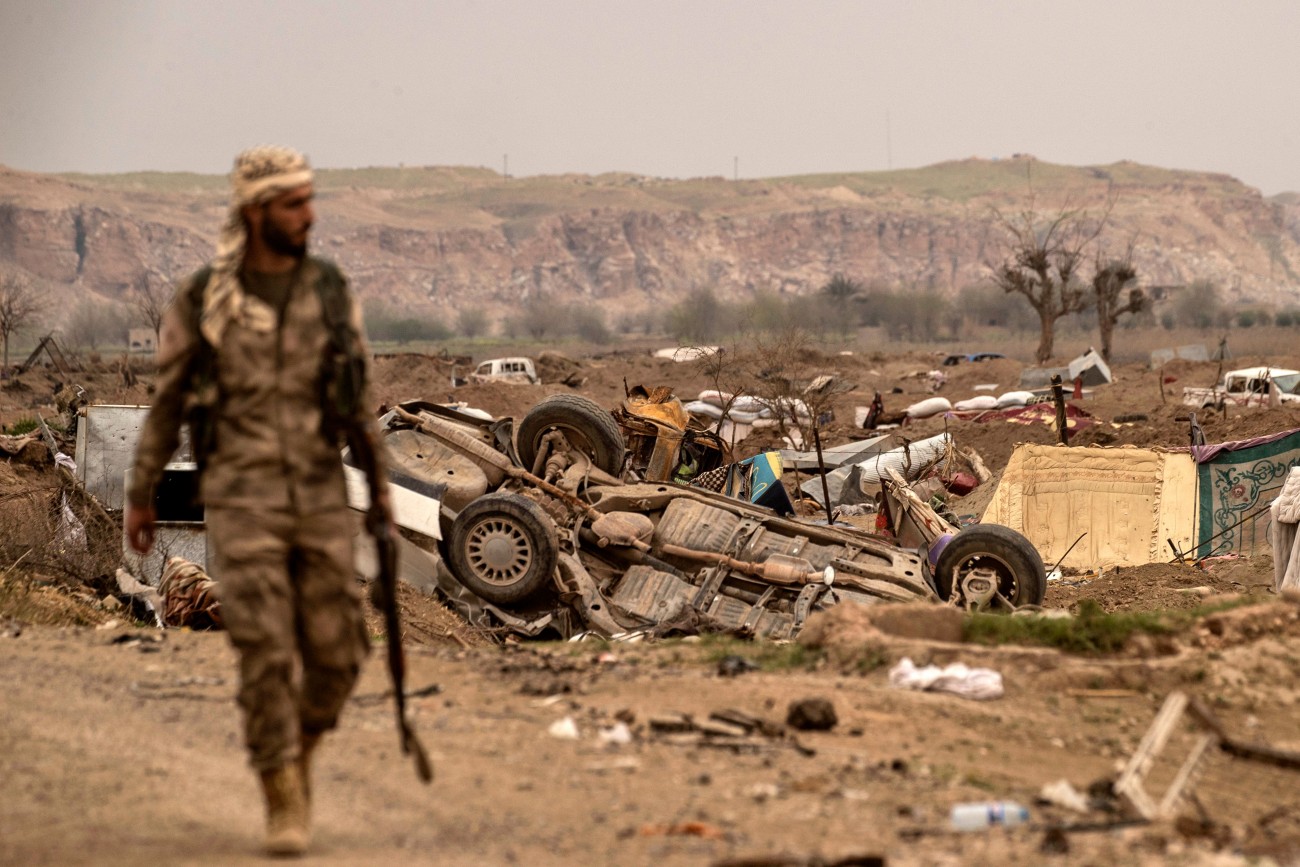
"The battle took place in territory under the control of the U.S.-led coalition. Accordingly, the coalition bears responsibility for what happened. That applies not only to the U.S., but also to other members of the coalition that could have exerted pressure to organize and facilitate humanitarian response.”
Lessons learned
The numbers game
About two weeks after the offensive began on Feb. 9, the U.S. estimated that 2,000-3,000 people were still left in the Baghouz pocket.12 Four weeks later it turned out that it had been 29,000. The reasons for this enormous underestimation may simply lie in bad intel, but it should also be considered that the U.S. may have intentionally downplayed the numbers to avoid too much attention being paid to the fate of the tens of thousands of civilians. Either way, numbers that are provided by conflict parties should be carefully assessed.
The UN’s paralysis
The UN’s working relationship with the Syrian government threatens its basic principles of impartiality, neutrality, and independence. The UN was not involved in the process of providing adequate humanitarian response because of the Syrian government’s restrictions and the UN’s overall compliance. The need for the UN to emancipate itself is urgent. Given that the organization’s performance can only be as good as the sum of its parts, relevant donor countries should consider attaching clear conditions to their aid. Despite the fact that such regulations complicate the UN’s already limited operational independence, they can serve as the necessary pressure on the way toward much-needed reforms.
US-led coalition
To some extent, it is in the nature of an institution like the UN to be inflexible. Political paralysis is an unfortunate but integral part of the international system. In that regard, what happened during the battle for Baghouz should also be considered from a practical perspective. The battle took place in territory under the control of the U.S.-led coalition. Accordingly, the coalition bears responsibility for what happened. That applies not only to the U.S., but also to other members of the coalition that could have exerted pressure to organize and facilitate humanitarian response. For example, members of the coalition could have pushed the U.S. to deploy a field hospital near the frontlines or express willingness to send mobile hospitals themselves.
Endnotes
-
You can read the complete essays he wrote at International Review (https://international-review.org/the-things-they-left-behind/) and Strife (http://www.strifeblog.org/2019/05/09/widows-and-children-of-the-caliphates-last-stand/ ; http://www.strifeblog.org/2019/06/07/where-evil-met-its-end/)
-
Slemrod, Annie. “Security Checks Delaying Urgent Healthcare for Syrians Fleeing Islamic State: UN Official.” The New Humanitarian. April 16, 2019. http://www.thenewhumanitarian.org/news/2019/02/11/security-checks-delay….
-
“Flash Update 3: Syria: Al-Hole Camp and Suar Transit-Centre, Deir Ez-Zor, 25 February, 2019 [EN/AR] - Syrian Arab Republic.” ReliefWeb. UN Office for the Coordination of Humanitarian Affairs, 2AD. https://reliefweb.int/report/syrian-arab-republic/flash-update-3-syria-….
-
Author interview with former UN staff and INGOs active in northeast Syria.
-
For the sake of completeness it should be noted that YPG fighters argued in conversations with this author that only IS fighters were buried.
-
“UNSCR Search Engine for the United Nations Security Council Resolutions.” UNSCR. July 14, 2014. http://unscr.com/en/resolutions/2165.
-
https://assets.documentcloud.org/documents/2861241/Taking-Sides-the-United-Nations-Loss-of.pdf
-
Haid, Haid. “Principled Aid in Syria: A Framework for International Agencies.” Chatham House. July 16, 2019.
https://www.chathamhouse.org/publication/principled-aid-syria-framework…. -
Research, Offbeat. “Are the Free Burma Rangers Involved in Fighting alongside the SDF?” Medium. November 20, 2019.
https://medium.com/@offbeatresearchinfo/are-the-free-burma-rangers-invo…. -
Author interview with Dave Eubank, founder of the Free Burma Rangers.
-
Dave Eubank emphasized that the Free Burma Rangers were at the frontlines as guests of the SDF, not the US.
-
These numbers were supported by the UN, which on Feb. 19 estimated that 200 families were left in the enclave.
Photos
1. Civilians evacuated from ISIS's embattled holdout of Baghouz wait for bread and water at a screening area held by the Kurdish-led Syrian Democratic Forces (SDF), in the eastern Syrian province of Deir Ezzor, on March 5, 2019. (Photo by Bulent KILIC / AFP via Getty Images)
2. A general view of destruction inside the final encampment held by ISIS on March 24, 2019 in Baghouz, Syria. (Photo by Chris McGrath/Getty Images)
3. A girl sits next to packages of humanitarian aid at al-Hol camp for displaced people in al-Hasakeh governorate in northeastern Syria on July 22, 2019, as people collect UN-provided humanitarian aid packages. (Photo by Delil souleiman / AFP via Getty Images)
4. Smoke rises in ISIS's last remaining position on the eastern banks of the Euphrates River (C) in the village of Baghouz during battles with the Syrian Democratic Forces (SDF), in the countryside of the eastern Syrian province of Deir Ezzor, on March 18, 2019. (Photo by DELIL SOULEIMAN/AFP via Getty Images)
5. Women wearing full face veils (niqab) walk with children alongside others said to be members of ISIS by the US-backed Syrian Democratic Forces (SDF), exiting from the village of Baghouz in the eastern Syrian province of Deir Ezzor, on March 14, 2019. (Photo by DELIL SOULEIMAN/AFP via Getty Images)
6. A member of the Syrian Democratic Forces (SDF) walks past damaged vehicles on the side of a road in the village of Baghouz in Syria's eastern Deir Ezzor province near the Iraqi border on March 24, 2019, a day after ISIS's "caliphate" was declared defeated by the US-backed Kurdish-led Syrian Democratic Forces (SDF). (Photo by DELIL SOULEIMAN/AFP via Getty Images)
About the Middle East Institute
The Middle East Institute is a center of knowledge dedicated to narrowing divides between the peoples of the Middle East and the United States. With over 70 years’ experience, MEI has established itself as a credible, non-partisan source of insight and policy analysis on all matters concerning the Middle East. MEI is distinguished by its holistic approach to the region and its deep understanding of the Middle East’s political, economic and cultural contexts. Through the collaborative work of its three centers — Policy & Research, Arts & Culture and Education — MEI provides current and future leaders with the resources necessary to build a future of mutual understanding.
About the Author
Lars Hauch writes about security politics, Islamism, and humanitarian affairs in the Middle East, with a special focus on Syria. His work has appeared in numerous publications, including International Politics and Society (IPS), Blätter für deutsche und internationale Politik, Zenith Magazine, Middle East Eye, Syria Deeply, and FDD’s Long War Journal.












